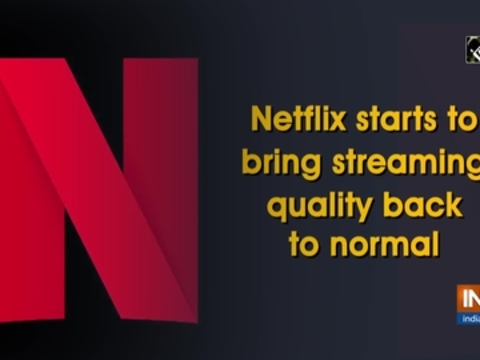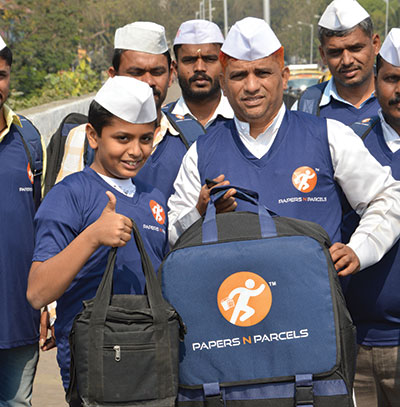No one knows how many people live in North Macedonia
One reason no one knows how many people live in North Macedonia is that no one knows how many people have left the country, especially since the last census in 2002.
The problem with trying to come up with a figure for Macedonians abroad is that it depends on how you define who should count as a Macedonian. And even if you define it just as those who have Macedonian citizenship, you rapidly discover that the data available is patchy and unreliable.
Unverified numbers are bandied about in political debate as if they were somehow accurate and verified. There is little understanding that numbers quoted by otherwise reputable organisations like the World Bank or the United Nations give ballpark figures but are otherwise extremely rough and ready.
The reason for this is that such organisations do not collect their own data but have to rely on figures from others.
The first thing to understand is whom exactly we are talking about or counting when it comes to numbers. Are we talking about ethnic Macedonians, citizens of Macedonia or the descendants of people who left Macedonia in the past?
If it is the latter, then it is important to remember that many of their ancestors emigrated from a region that is far bigger than today’s North Macedonia.
Macedonians have been emigrating in large numbers since the late 19th Century, which means that, by any definition, there are going to be a large number of people abroad of Macedonian descent or people whose roots are in Macedonia.
The United Macedonian Diaspora (UMD), which is based in Washington, D.C., represents ethnic Macedonians. Thus Albanians, Turks, Roma and other minorities from what is now North Macedonia are not included in their guesstimates of the numbers of Macedonians abroad.
The UMD claim there are up to 250,000 people of Macedonian heritage in Canada, up to 300,000 in Australia, up to 600,000 across Europe excluding North Macedonia itself and 500,000 in the United States. That comes to a total of 1.65 million.
However, a significant but unknown proportion of those people descend from emigrants who left Ottoman Macedonia, which included Thessaloniki, now Greece’s second city.
The Balkan wars of 1912-13 saw this territory divided into three. While a small part was incorporated into Bulgaria, the bulk was divided between Greece and Serbia.
At the end of World War II, the latter became one of Yugoslavia’s six republics, which in turn became today’s North Macedonia.
The end of World War II in Greece also gave way to a civil war that saw the flight of tens of thousands of ethnic Macedonians, often called Aegean Macedonians.
As with Greek Macedonian refugees, many were evacuated to the Soviet Union (Tashkent in Uzbekistan in particular) and other Eastern Bloc countries. Others fled to Australia, the United States and Canada.
Thousands, however, came to Yugoslav Macedonia directly but many who did not trickled in from the Soviet Union and elsewhere in the two decades after the war.
By the mid-1960s, some 50,000 Aegean Macedonians are estimated to have made their home here. However, some were also settled in Vojvodina in northern Serbia.
Until the mid-1960s, emigration from Yugoslavia was either illegal or at least extremely hard. For Macedonia, there was a major exception though. An agreement between Turkey and Yugoslavia allowed Turks from Macedonia to emigrate freely.
According to the Turkish Ministry of Foreign Affairs, 170,000 Turks did so between 1953 and 1968. However, while the majority were ethnic Turks, many others such as Albanians and Macedonian Muslims declared themselves to be Turks in order to leave.
The difference between these people and the ethnic Macedonians who emigrated is that while in the diaspora the latter often fiercely guard their Macedonian identity, those who went to Turkey soon identified completely as Turks.
From the mid-1960s, Macedonians, like other Yugoslavs, began moving to Germany and other European countries for work, and a new chapter in the history of Macedonian emigration began.
Today, quite apart from the estimates of diaspora organisations, there are several figures in circulation for the number of Macedonians abroad.
In March 2019, the government published its National Strategy for Cooperation with the Diaspora, which states that 700,000 “can be accepted as a rough volume of emigration”. But it cautions that this number can only be estimated “through foreign sources of data”.
A UN figure for 2019, also based on foreign data, gives a precise figure of 658,264 while one for the World Bank gives a rounded 500,000.
Edmond Ademi, the Minister for the Diaspora, said he believed the correct figure is 500,000 to 600,000, while Izet Zeqiri, an economist who has studied the figures, puts it at 600,000 to 640,000.
When Macedonians abroad show up in foreign data, it means they are citizens and so ethnicity is not a factor. However, it is clear that in some countries different nationalities tend to group together.
Albanians are the vast majority of Macedonians in Switzerland, for example. Macedonian Muslims go to Italy and ethnic Macedonians tend to go to Slovenia and Sweden.
If those abroad have also acquired the citizenship of another country, then mostly they no longer show up in the figures.
Australia, by contrast, gives a figure of just over 49,000 for those resident who were born in what is today North Macedonia.
In Europe, according to Eurostat data, which in turn comes from national statistical agencies, on 1 January 2019 there were 102,000 Macedonians in Germany, 66,600 in Switzerland, 63,600 in Italy, 23,400 in Austria and 12,300 in Slovenia.
According to Eurostat, there were 156,900 Macedonian citizens in the EU in 2010 and 220,400 in 2019.
But, as with all such figures, they are also problematic. Firstly, at least 81,000 Macedonians have acquired Bulgarian passports, which means they can work easily in the EU. Thus, any Macedonian registered as a Bulgarian in the EU will not show up in the data as a Macedonian.
Secondly, according to Apostol Simovski, the director of the State Statistical Office, foreign data showing Macedonian citizens abroad does not show where they came from.
For example, the number of Macedonians in Italy is dropping, while their number in Germany is increasing.
How can you create an economic policy without knowing who is here and who is not?
It would be wrong, therefore, to assume that those arriving in Germany or elsewhere are new emigrants from North Macedonia and hence that its population has dropped by the same number as the new arrivals may have left the country years ago.
Thirdly, Eurostat figures — and hence the national data from which they are compiled — are puzzlingly patchy. Eurostat records the number of Macedonians in Greece, Spain, Britain, Malta and Croatia as zero.
In fact, for example, there are estimated to be 3,000 Macedonians living in Britain, not including those registered as Bulgarians, according to the Office for National Statistics. At the end of 2018, there were 1,591 Macedonian citizens with residence permits for Malta.
If you Google “How big is the Irish diaspora”, the top search result yields an article from The Irish Times that says “three to 70 million, depending on who is talking”.
There are 4.83 million people in the Irish Republic. In terms of Macedonians abroad, they seem to be taking on the mantle of the Irish of the Balkans, except that unlike the Irish, they do not even know how many people live at home.























